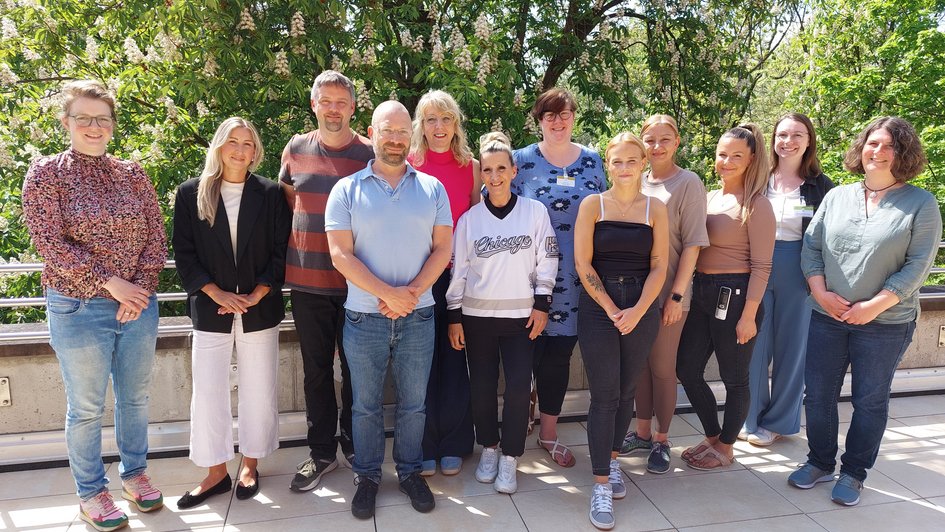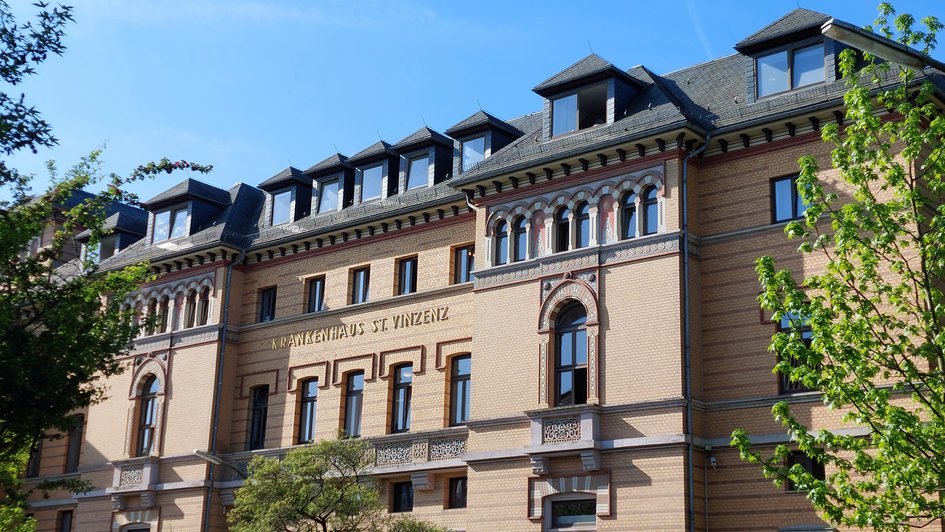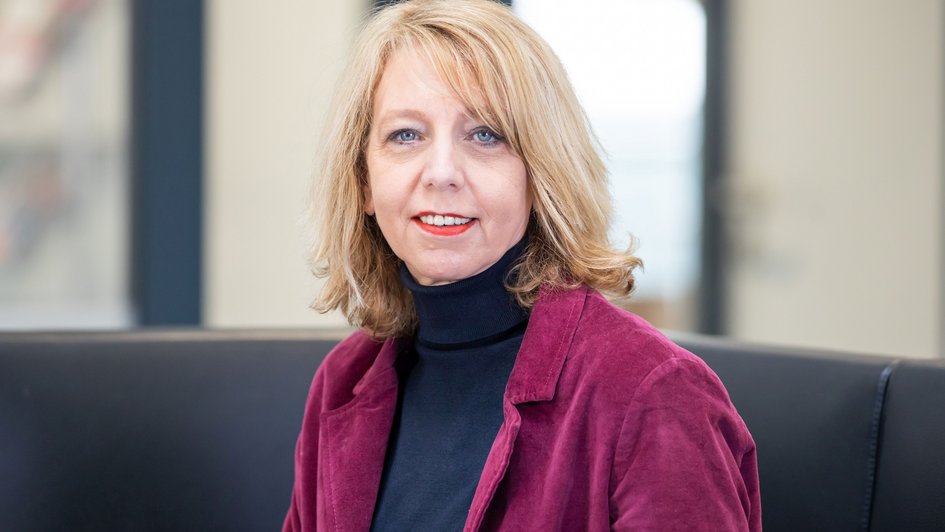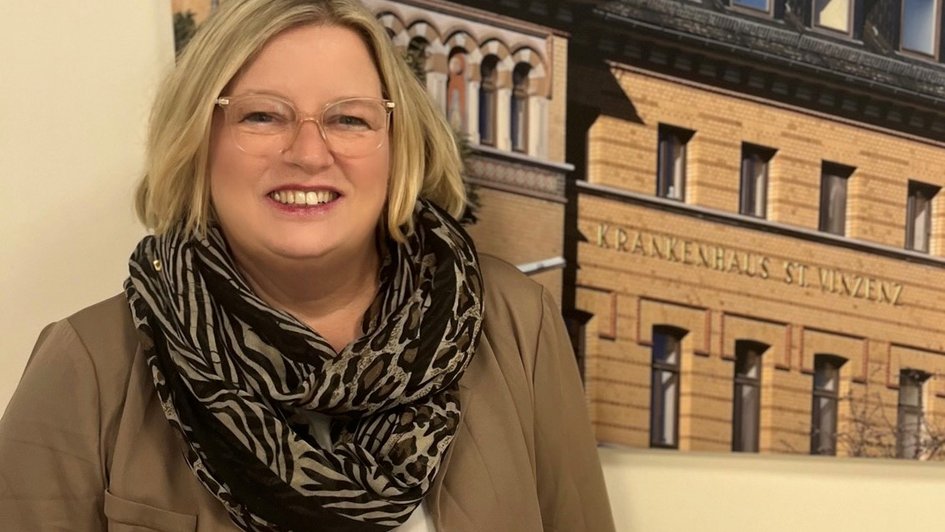Since April 2020, the Evangelical Foundation Neuerkerode (external link, opens in a new window) has been operating a senior citizens' and care centre in a former hospital building in Braunschweig. Haus St. Vinzenz (external link, opens in a new window), originally from the Wilhelminian era, has been extensively renovated and offers 97 care places. In future, it will also become a living lab for a joint project with Ostfalia University of Applied Sciences and the Hannover Braunschweig Göttingen Wolfsburg GmbH metropolitan region (external link, opens in a new window). In the CoCareLab project, the three partners are trialling digital tools for improved care. The first workshops have already taken place to analyse the current state of care.
In an interview with Jennifer Bullert from metropolregion.de (external link, opens in a new window), Silvia Bothe, facility manager at Haus St. Vinzenz, and Martina Hasseler, Professor of Health and Nursing Sciences at Ostfalia University, provide an insight into the work of the nursing team and outline what the CoCareLab aims to improve.
Please describe what a typical day in your nursing home looks like.
Silvia Bothe: I start work at 6 o'clock in the morning. That's when the handover from the night shift begins. We start caring for the residents at 6.30 am. The specialist prepares the medication, plans and carries out the nursing care activities such as bandaging, administering medication and blood sugar checks, as well as injections.
After basic care, the ancillary activities such as documentation, serving meals, toileting etc. begin. Immobile residents are moved several times and encouraged and instructed to drink. The individual needs of each resident must not be ignored. In the meantime, the specialist is busy with administrative tasks such as making rounds, changing or requesting prescriptions and implementing them.
At 1.30 p.m. there is another handover with the late shift, where you can actually say it's the same procedure as the early shift but in reverse. The shift then lasts until 9.42 pm until the night shift arrives. The odd hours are due to the 38.5-hour working week.
Shift work, physical but also psychological and emotional components: Where do you currently see the greatest strain in day-to-day caring and would you most like support?
Silvia Bothe: Too much time is spent on administrative tasks and documentation, which means there is not enough time for the residents.
What measures have you already had good experiences with in the past?
Silvia Bothe: We have had good experiences with documentation via mobile devices, so that you don't have to rely on an office and a computer and can therefore document promptly.
What have care home residents reported back to you as a positive development?
Silvia Bothe: The digital care beds are rated by care home residents as easy to use. But it's more about raising and lowering the bed, adjusting the head section and the leg section. However, the intended effect of the care beds can neither be used and assessed by the care home residents nor by the care professions. The care boards are too complicated for this and you have to register.
Care home residents have also had positive experiences with the Memorebox. The Memorebox is a digital game tool that is played on a television and encourages movement and thinking. The Wii games are also well received. The residents are delighted with these applications. Overall, however, they have no experience at all with digital tools for specialised care.
Which digital assistance systems have you already tried out?
Silvia Bothe: We have trialled the digital care home beds and another project on incontinence materials with sensor technology. However, both projects were not successful due to technical problems and a lack of interoperability. For example, the sensor technology did not transmit signals from the incontinence material.
Which assistance systems are still to be used?
Martina Hasseler: The CoCare Lab project is looking for and trialling further digital tools in long-term care. However, these should be assessed as useful together with the care professions in the facility. To this end, joint workshops have already been held in some cases, not only to analyse the useful digital tools, but also to jointly develop scenarios for how they should be used and work.
What does the collaboration with Ostfalia University look like?
Martina Hasseler: Ostfalia, in other words us, is taking on the scientific management and coordinating the participatory approach. We are also responsible for the scientific support, i.e. monitoring the trialling of the digital tools.
What criteria must a digital tool fulfil in order to guarantee or support better care in the long term?
Martina Hasseler: The digital tools must be easy for everyone to use, they must be easy to integrate into the work and care process and they must support the nursing professions in their work. They must have the potential to improve the quality and results of specialised nursing care.
Bottom-up instead of top-down: What are the advantages of this approach?
Silvia Bothe: The advantage is that everyone is involved in where they are in terms of their skills and needs. We can take the employees with us and ask about and integrate their needs. The willingness to try out digital tools is increasing.
Where can challenges arise when establishing new tools?
Silvia Bothe: In principle at several points, e.g. the lack of interoperability, if the degree of complexity is too high.
How are staff trained in the use of digital tools?
Silvia Bothe: We have planned both individual and group training sessions, as employees should be able to use the digital tools competently. If questions about handling etc. do arise, a mentor or contact person must be available to provide support.
How will the use ultimately affect the carers? To what extent are they involved in the evaluation of the tools?
Silvia Bothe: This project is a publicised project and if residents or relatives have questions about it, these will of course be answered. If the tools affect the carers, they will of course be informed and the opinion or feedback from the carers and possibly their relatives can also be useful.
What does the evaluation process look like?
Martina Hasseler: It is carried out in parallel and data collection methods such as participant observation, qualitative interviews and, if necessary, document analyses are used. The key points that are observed are usability, feasibility and appropriate implementation in the care process. The tools are intended to support the work of care professionals in such a way that they feel they are providing high-quality long-term care. The results of the evaluation will be regularly reflected back to the participating companies so that they can adapt their tools to the needs of a care home.
The project started at the beginning of the year and will run until 2027. What final criteria would have to be met for you to describe the CoCareLab as a success?
Martina Hasseler: The criteria are on two levels: a) we have jointly found and further developed digital tools that support and improve care provision in nursing homes and b) we are supported by the state or other funding bodies to continue this digital living lab because digitalisation in long-term care is an ongoing process. Furthermore, far too many digital tools are still being developed that ignore the needs and processes of long-term care and have no benefit. This digital living lab has the potential to work with care home staff and companies to further develop digital tools in such a way that they support and improve long-term care in the interests of people.
The CoCareLab project is co-financed by the European Union and the state of Lower Saxony.





